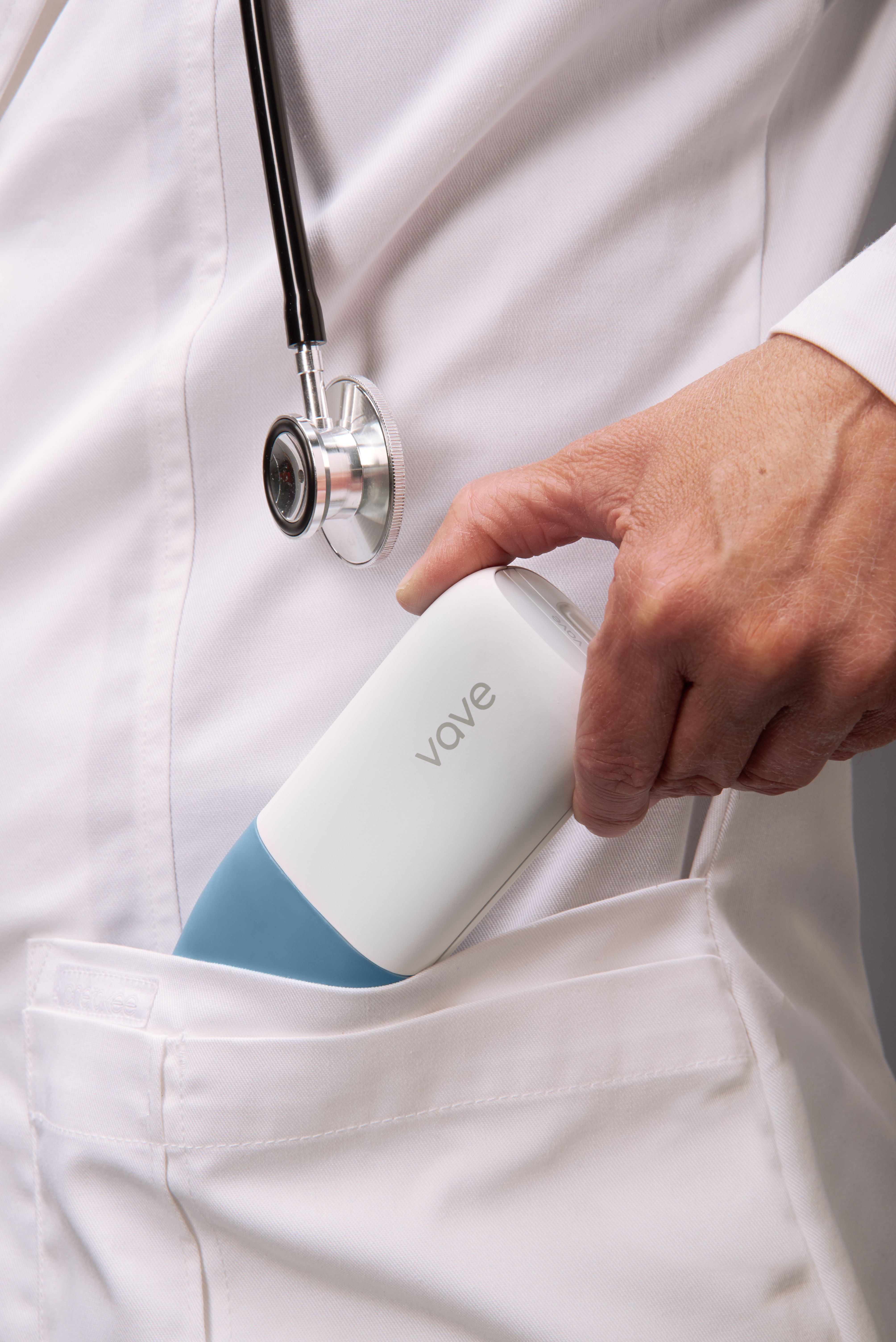- AI
- Molecular Imaging
- CT
- X-Ray
- Ultrasound
- MRI
- Facility Management
- Mammography
Is Ultrasound the New Stethoscope?
A partnership between one medical school and an ultrasound manufacturer is intended to re-design how students learn.
When you were in medical school, your stethoscope likely felt like an extension of your hand – always by your side and your go-to tool for conducting exams and assessing your patients. For the next generation of medical students, point-of-care ultrasound could take that coveted spot.
At least, that is the goal of a burgeoning partnership between the College of Osteopathic Medicine at Touro University in Nevada and point-of-care ultrasound manufacturer Vave Health, said Amin Nikoozadeh, Vave founder and chief executive officer.
“We want to empower doctors, and ultrasound is the best tool to do that,” he said. “Ultrasound has a lot of utility. In a lot of senses, it is better than the stethoscope in that it allows students to see instead of just hear.”
Starting this semester, Vave will outfit Touro’s medical students with wireless pocket-sized ultrasound devices – that can sync with tablets and smartphones – that they can use for hands-on training in a variety of settings, including clinical rotations, in-person lab classes, or remotely from their home. In addition, each student will also receive a Vave EduPlus Membership that gives them access not only to ultrasound experts, but also to in-app content that can help with medical exam preparation and offer clinical context. The details of what educational details will be included in the app are still under discussion.
Courtesy: Vave Health

But, by putting a portable ultrasound in the hands of every medical student, they can begin learning – from day one – how what they read about in their textbooks actually appears in real patients.
“Putting…ultrasound in the hands of our students provides them with cutting-edge technology to further their hands-on education, something that is so critical, especially in a time when traditional forms of learning have been rattled by the pandemic,” said Wolfgang Gillar, D.O., dean of the College of Osteopathic Medicine. “We’re proud to provide our students with a probe that allows them to practice in a variety of environments, whether in a hospital, rural area, or an underserved community.”
Integrating ultrasound during the first two years of training could fundamentally change medical education, said Renee Dversdal, M.D., Vave’s chief medical officer.
“It’s taking advantage of different educational concepts, longitudinal learning, and applying ultrasound,” she said. “For example, when they’re studying the carotid artery, we can show them the three layers, as well as show them where plaque accumulates and what happens with turbulent flow.”
The idea, she said, is to weave point-of-care ultrasound seamlessly into medical training and patient care. While receiving didactic training, students will also gain instruction and experience in image acquisition, image interpretation, and clinical integration.
“It’s a cooler way to learn anatomy and highlight the clinical exam,” she said. “You’re simultaneously sneaking in image acquisition and image interpretations skills. They’re subtly learning the basics of these skills. The goal is to have ultrasound so woven into their education that by the time they graduate, they won’t even have to think about doing ultrasound – it’ll just be second nature.”
Most importantly, she said, this partnership is not one-size-fits-all. It can be customized to meet the needs and adhere to the curriculum designs of individual medical schools. Basically, administrations can create their own programs.
And, from a partnership perspective, Nikoozadeh said, this is not a one-time interaction. The business model is designed to be low-cost for the medical school, and Vave will routinely provide updates and upgrades to the software as needed to ensure students have access to the most current information.
“We want our partners to know that they are getting a platform that evolves with them – that they’re not going to get left behind,” he said. “They will have access to the latest technologies in hardware, software, and artificial intelligence. This is a change that will lead to faster adoption of ultrasound technology at both the medical school and clinical levels.”
For more coverage based on industry expert insights and research, subscribe to the Diagnostic Imaging e-Newsletter here.
Can Short-Term Measures Provide Some Relief with the Radiologist Shortage?
April 4th 2024In an attempt to navigate the imbalance between rising imaging volume and a shortage of radiologists, researchers proposed a variety of measures that may provide additional resources, bolster productivity, and help mitigate burnout.
The Reading Room: Artificial Intelligence: What RSNA 2020 Offered, and What 2021 Could Bring
December 5th 2020Nina Kottler, M.D., chief medical officer of AI at Radiology Partners, discusses, during RSNA 2020, what new developments the annual meeting provided about these technologies, sessions to access, and what to expect in the coming year.
